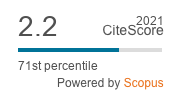The Language Analysis of Syntactic Structures Embedded in TOEFL Reading Comprehension Passages and The Language Achievement of Kasetsart University Students both Prior to and Following Their Undergoing a One-semester TOEFL Course.
Keywords:
Syntactic analysis, reading comprehension, TOEFLAbstract
The purposes of this research were to analyze the syntactic structures embedded in TOEFL reading comprehension passages and to assess the achievement of Kasetsart University students both prior to and following their undergoing a one-semester TOEFL course. The author started her research by analyzing each sentence in the reading comprehension passages that were used as practice questions and in the exam paper that was used as both the pre-test and the post-test on the basis of core parts of the main clause. The various types of sentences were also identified together with their embedded sentence elements that were considered necessary. To show the extent of the questions being asked in the reading comprehension part of TOEFL analyzed, the author carried out a frequency analysis of all the stated and implied questions of each passage and gave the expected answers in bold type for better understanding. To determine the TOEFL achievement of Kasetsart University students, the author had stated a hypothesis as a basis for further investigation. Match-paired t-test was used to analyze students’ pre-and post-test scores at the .05 level of significance. The results of the students’ achievement supported the stated hypothesis, which implies that any student undergoing a one-semester TOEFL course, studying the 3 sections of TOEFL-Listening Comprehension, Structure and Written Expression, Reading Comprehension and Vocabulary –will achieve a higher standard. Since this research involved both the syntactic analysis and the TOEFL achievement of the learners, the author wanted to find the questions that caused her students problems in the reading comprehension part of the exam paper, and to illustrate the relationship of her analysis to their reading achievement so as to enable her to provide sound and valuable suggestions later. She then made a summary by carrying out a frequency analysis of the various types of main clauses and dependent clauses embedded in the constructions analyzed. The items on which the students’ correct answer was lower than 50 percent were considered problems for her students. When they were checked with the syntactic analysis of the relevant reading parts that provided the expected answers, it was found that the syntactic points that hindered her students turned out to be mostly simple sentences with various kinds of phrase modifiers and some idioms embedded. Some complex and compound-complex sentences with various dependent clauses embedded were problems for their understanding of the printed material as well. The results of this research also showed that, since the reading comprehension part of TOEFL asks both stated and implied questions, a good knowledge of syntactic structures could help the students understand what they read and enable them to choose the correct answers better. The correct answers to the implied questions have to include the mastery of adequate vocabulary of various academic fields together with reading techniques, i.e. how to draw fair inference, how to find suitable topics or titles, or how to check supporting details.
Downloads
Published
How to Cite
Issue
Section
License
This is an open access article under the CC BY-NC-ND license http://creativecommons.org/licenses/by-nc-nd/4.0/









